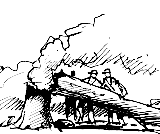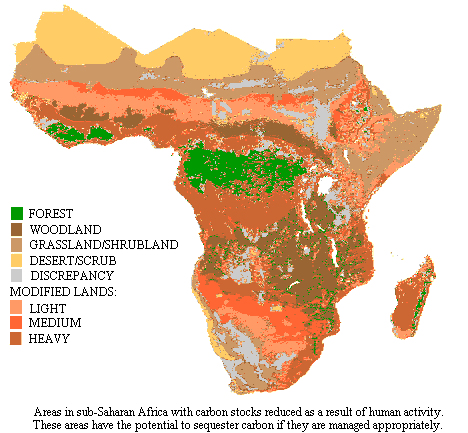


 |
 |
 | |||
|
| |||||
|
|
It is possible to remove carbon from the atmosphere and sequester it in
forests and forest products, even though the trend to date has been the reverse.
Management practices that could reduce or reverse the current emissions of
carbon from land include (1) a halt to deforestation, (2) an expansion in the
area of forests, (3) an increase in the stocks of carbon in existing forests,
(4) more efficient harvest and greater use of wood in long-lasting products, and
(5) the substitution of wood fuels for fossil fuels (see
Table 1 at bottom of page). It is important to recognize, however, that the
rate of global warming needs management as well. Unless the warming is gradual
enough to avoid widespread mortality of forests, the additional releases of
carbon caused by the warming itself, through increased respiration, decay, and
fires, may cancel the intended effects of forest management |
 | ||
| Figure 1 |
 |
| For more information, please write or call
us at: The Woods Hole Research Center P.O. Box 296 Woods Hole, MA 02543 (508) 540-9900 / Telefax (508) 540-9700or send us email: info@whrc.org | |
| Illustrations by Malcolm Wells -
Underground Art Gallery, Brewster, MA © The Woods Hole Research Center, 1996. All rights reserved. | |